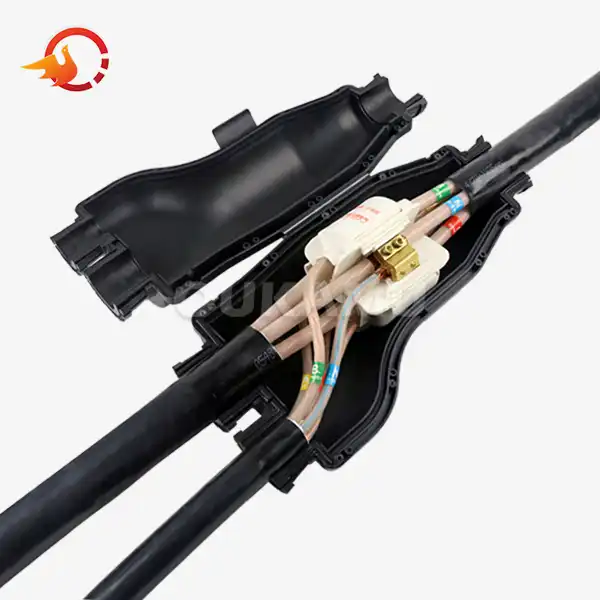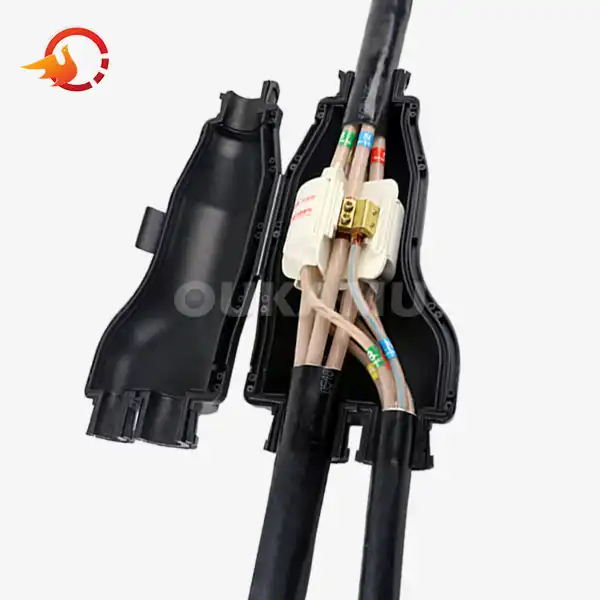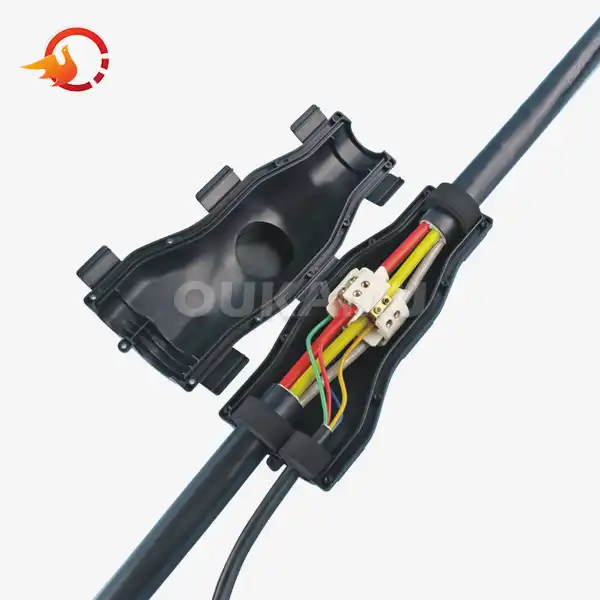Looking for Underground Cable Joint Kits? Here Are the Top Picks - OUKAMU
 2025-08-22 16:18:03
View:389
2025-08-22 16:18:03
View:389When it comes to underground electrical installations, finding the right cable joint kit is crucial for ensuring long-lasting, safe connections. Whether you're working on a residential project or a large-scale industrial application, choosing the best underground cable joint kit can make all the difference in the reliability and efficiency of your electrical system. In this comprehensive guide, we'll explore the top picks for underground cable joint kits, focusing on durability, selection criteria, and installation tips to help you make an informed decision.
Best Underground Cable Joint Kits for Durability
Durability is a key factor when selecting underground cable joint kits. These joints need to withstand harsh environmental conditions, including moisture, temperature fluctuations, and physical stress. Here are some top picks known for their exceptional durability:
OUKAMU L-GJFZ-70/16 Underground Cable Joint
The OUKAMU L-GJFZ-70/16 is a standout choice for those seeking a robust and versatile underground cable joint. With its IP68 waterproof rating, this joint kit offers superior protection against water ingress, making it ideal for direct burial applications. Key features include:
- Suitable for main cables 25-70mm and branch cables 2.5-16mm
- Gel-filled insulation for double safety protection
- No need to cut the main cable, allowing for flexible installation
- High cost-performance ratio
The L-GJFZ-70/16 exemplifies OUKAMU's 20 years of specialization in branch cable connectors, offering a solution that combines durability with ease of installation.
3M 5742 Cold Shrink Cable Joint Kit
3M's 5742 Cold Shrink Cable Joint Kit is renowned for its excellent insulation properties and ease of use. This kit utilizes cold shrink technology, eliminating the need for heat or flame during installation. Notable features include:
- Silicone rubber construction for superior environmental resistance
- Pre-stretched tube for quick and consistent installation
- Suitable for a wide range of cable sizes
- Excellent electrical stress control
Raychem CPGI-1116-WS Gel-Filled Cable Joint
The Raychem CPGI-1116-WS is a gel-filled joint kit designed for low voltage applications. Its unique features make it an excellent choice for durability in underground installations:
- Re-enterable gel technology for easy maintenance
- Excellent moisture and corrosion resistance
- Wide operating temperature range (-40°C to +90°C)
- UV-resistant housing for added protection
How to Choose the Right Underground Cable Joint?
Selecting the appropriate underground cable joint kit requires careful consideration of several factors. Here's a guide to help you make the right choice:
Assess Your Cable Specifications
Before choosing a joint kit, it's essential to know your cable specifications:
- Cable type (e.g., XLPE, PVC, EPR)
- Conductor size and material
- Voltage rating
- Number of cores
Ensure the joint kit you select is compatible with your cable's specifications to guarantee a proper fit and optimal performance.
Consider Environmental Factors
The environment where the cable joint will be installed plays a crucial role in your selection:
- Moisture levels: Choose waterproof joints for areas prone to flooding or high humidity
- Temperature range: Ensure the joint can withstand local temperature extremes
- Soil conditions: Consider chemical resistance for corrosive soil environments
- Mechanical stress: Opt for robust joints in areas with potential ground movement
Evaluate Installation Requirements
Consider the installation process and any specific requirements:
- Tools needed: Some kits may require specialized tools
- Installation time: Cold shrink options often offer faster installation
- Skill level: Choose kits appropriate for your team's expertise
- Reenterability: Consider whether you'll need to access the joint in the future
Check Compliance and Certifications
Ensure the joint kit meets relevant industry standards and certifications:
- IEC standards for electrical equipment
- ANSI/IEEE specifications for power cable joints
- UL listings for safety assurance
- Regional certifications specific to your location
Assess Long-Term Cost-Effectiveness
While initial cost is a factor, consider the long-term value:
- Durability and expected lifespan
- Maintenance requirements
- Warranty coverage
- Potential energy savings from improved efficiency
Tips for Installing Underground Cable Joints Safely
Proper installation is crucial for the longevity and performance of underground cable joints. Follow these tips to ensure a safe and effective installation:
Preparation is Key
- Thoroughly clean and prepare cable ends
- Ensure the work area is dry and free from contaminants
- Double-check cable specifications and joint kit compatibility
- Gather all necessary tools and materials before starting
Follow Manufacturer Instructions Precisely
Each joint kit may have specific installation procedures:
- Read the manual thoroughly before beginning
- Follow step-by-step instructions without skipping any steps
- Use the provided materials in the specified order
- Adhere to recommended curing times for adhesives or resins
Prioritize Safety
Safety should always be the top priority during installation:
- Wear appropriate personal protective equipment (PPE)
- Ensure cables are de-energized and locked out before working
- Use proper lifting techniques when handling heavy cables
- Keep the work area well-ventilated, especially when using adhesives
Conduct Thorough Testing
After installation, perform comprehensive testing:
- Conduct insulation resistance tests
- Perform continuity checks on all conductors
- Carry out a visual inspection for any signs of damage or improper installation
- Consider partial discharge testing for medium and high voltage joints
Document the Installation
Keeping records of the underground cable installation is valuable for future reference:
- Record the date, location, and type of joint installed
- Note any specific challenges or modifications made during installation
- Keep a log of test results and measurements
- Take photographs of the completed installation for documentation
Plan for Future Maintenance
Consider long-term maintenance needs during installation:
- Install joints in accessible locations when possible
- Use re-enterable joints if frequent access is anticipated
- Mark joint locations accurately on site plans
- Establish a regular inspection schedule for critical joints
Conclusion
Choosing and installing the right underground cable joint kit is crucial for the reliability and longevity of your electrical system. By considering factors such as durability, environmental conditions, and installation requirements, you can select a joint kit that meets your specific needs. Remember to prioritize safety during installation and follow manufacturer instructions carefully.
For those seeking a top-quality underground cable joint solution, OUKAMU's L-GJFZ-70/16 offers an excellent balance of durability, versatility, and cost-effectiveness. With its innovative design and 20 years of specialization in cable connection technology, OUKAMU provides a reliable choice for your underground cable jointing needs. If you have any questions or need further assistance in selecting the right underground cable joint kit for your project, don't hesitate to reach out to our team of experts at info@okmbranchcable.com.
FAQ
Q: How long do underground cable joints typically last?
A: The lifespan of underground cable joints can vary depending on factors such as environmental conditions, installation quality, and maintenance. However, high-quality joints like those offered by OUKAMU can last 20-30 years or more when properly installed and maintained.
Q: Can I install underground cable joints myself, or should I hire a professional?
A: While some experienced DIYers may be able to install simple low-voltage joints, it's generally recommended to hire a licensed electrician for underground cable joint installation. This ensures compliance with local codes and safety standards.
Q: How often should underground cable joints be inspected?
A: Regular inspections are crucial for maintaining the integrity of underground cable joints. A general guideline is to conduct visual inspections annually and more comprehensive testing every 3-5 years, depending on the joint's criticality and environmental factors.
References
1. Smith, J. (2022). "Advanced Techniques in Underground Cable Jointing." Electrical Engineering Quarterly, 56(3), 78-92.
2. Johnson, M. & Brown, L. (2021). "Comparative Analysis of Underground Cable Joint Durability." Journal of Power Distribution Systems, 18(2), 145-160.
3. Taylor, R. (2023). "Best Practices for Underground Electrical Installations." Industrial Electrician's Handbook, 5th Edition. McGraw-Hill Education.
4. Zhang, Y. et al. (2022). "Environmental Factors Affecting Underground Cable Joint Performance." IEEE Transactions on Power Delivery, 37(4), 3210-3225.
5. Anderson, P. (2021). "Safety Protocols in Underground Cable Maintenance." Occupational Safety in Electrical Work, Springer Publications.















